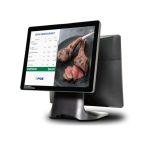No products in the cart.

As a business, your end goal is to increase your bottom line and maximise your profit. Grab any opportunities that offer a chance to get closer to your goal, no matter how small of importance it may be.
There are countless approaches and methods to do so. Two tactics that you should not ignore are upselling and cross-selling. Ultimately these two tactics require you to recommend a product to a customer. However, upselling requires you to suggest a pricier product whereas, for the latter, a customer is referred to a relevant product to the product they already have on hand.
In the grand scheme of things, upselling and cross-selling may be tedious practices that will take time before they will bring a significant change to your revenue. That may be so, but a profit is still a profit. For every one customer that concedes, you will increase your revenue and ultimately, improve your bottom line.
Prerequisites
Before implementing these two tactics, there are several aspects you will need to take into consideration before moving forward. Ensure that you meet these 3 prerequisites:
Complementary Products
The products you recommend should be complementary and are relevant to their original purchase. Otherwise, you’d just confuse your customers.
Beneficial Products
Your complementary products need to offer some sort of perk and might even value-add the original purchase. This is a tad tricky as it ties in with your customer’s preferences. Your advice will be for naught if your customer cannot see how the product will benefit them. Thus, it is crucial to know your customers before selling them more merchandises. Engage in small talk and inquire about the products’ points of interest before singling out a product you think will benefit them.
Customer’s Willingness
Gauge the customer’s willingness to spend more. If your customer has informed you that they have a budget or they only have one product in mind, it’s best to respect their wishes and leave them alone lest they run away if you start upselling or cross-selling.
Start Upselling or Cross-Selling
Once you’ve met all 3 requirements, you may want to employ any of the following tactics and start upselling or cross-selling!
The Rule of 3
When you incorporate the ‘Rule of 3’ into your efforts, what you are essentially doing is providing the customer with 3 options for their purchase. The first one is a product that has a similar or the same price point as their original purchase. This is your starting price point. The second being a complementary product that has a mid-price point and the last option is, of course, one that has a higher price point.
Often than not, your customer will opt for the first option, or maybe even the second, if they are agreeable. The third option requires more effort on your part. By going the extra mile, whether it be service or product education, you will build trust and create a pleasant experience. Make your customers feel at ease by being genuine, and customers are more inclined to listen to what you have to say, and buy your items.
Be Sensible
On that note, be realistic when it comes to suggesting a product. When cross-selling, most customers are more receptive to recommended products that are priced lower than the original item. Some believe the price should be 75% lower, but you may want to experiment with your own target audience.
If you do not wish to employ the Rule of 3 in your upselling, you will then need to be able to understand what exactly your customer is looking for and gauge the price they’re willing to pay on top of their original purchase. For instance, airlines offer upgrades and packages to add on top of their flight, rather than pushing for an entire travel class upgrade.
Money’s Worth
As a customer, you’d want to save as much as you can with your purchases. Thus, it is almost second nature to gravitate to sales and discounts. As a retailer, you can use this as a chance to promote products that were originally at a high-price point by pricing them in the middle tier. While you may earn less profit, customers are more receptive to these sales even if they are still priced relatively high.
Another option is to engage in product bundling packages. By putting complementary products together in nice packaging, you are engaging them in cross-selling, albeit not in an overt manner. To further incentivise them even further, you can include a bundle discount. With the mindset of making their money’s worth, they will be more likely to take up on your offer.
A tactic that you might want to look into is placing certain products near the cashier. These products are meant to grab the attention of the customers as they wait in line to process their purchases. Spurred by impulse, these customers would take a few seconds before buying an item they had no intention of buying. Most of these products are priced significantly lower than their counterparts, thus making them great products to cross-sell.
Package It Right
Words have power, and it plays a vital role anytime you want to engage with your customers. Compare these two sentences:
“Would you like to get a $30 beauty blender with your $60 liquid foundation?”
“This foundation comes with a recommended beauty blender. But if you think it’s a tad pricey, you may do away with the beauty blender.”
Even though both sentences give the customer the freedom of choice, by being slightly more assertive, the customers are more likely to give in and purchase your product. However, resist using aggressive language and instead, opt for conversation-boosting power words. At the end of the day, your customer needs to be happy to entertain the idea of a second purchase.
Consider Exclusivism
You may want to establish exclusivity by selling your upsell products for a limited time or limited quantities. Consider the H&M x Giambattista Valli pink tulle dress that was priced at SGD$2651.85. Most people wouldn’t even consider buying it, but the fact of the matter is, all nine dresses were sold in a matter of minutes and the retailer’s website even crashed during the entire ordeal.
Of course, this does not have just to be your upsell products. Any complementary products with an increase in value are bound to be perceived favourably. Exclusivity is a business tactic.
Reward Your Customers
Rewarding your customers for their added purchase may be advantageous, especially if you have a customer loyalty program. By implementing a reward point or rebate system, your customers will be more inclined to purchase your suggested merchandises.
Unlike the other techniques that only require engagement between you and your customer, your business will need to employ a system that can keep up with all the data.
That said, a system you might want to consider is EPOS Point Of Sale (POS) System. This POS system serves as a cash register that allows customers to process their purchases. But more than that, the self-checkout machines will gather all the data and enable efficient management of accounts on the retailer’s end. The easy accessibility and navigation will allow you to update your reward points and rewards at any given point.
Having a one-stop solution is an investment that you may want to consider.
Conclusion
To apply upselling and cross-selling tactics, you’d first and foremost need to be able to convince your customers without being too aggressive. To do it correctly, you will need to get into the minds of your customers, evaluate their needs and gauge their willingness to pay. Finally, craft your approach accordingly, and you will be good to go!
Was this article helpful?
YesNo



